- Best overall EOR: Deel
- Best for global hiring: Multiplier
- Best all-in-one business software: Rippling
- Best free HR tool: Remote
- Best for first-time international businesses: Gusto
- Most flexible solution: Papaya Global
Workforces have really flung themselves out to the four winds in the last few years, haven’t they? Distributed and asynchronous teams are now almost the default in some industries. These remote teams offer enormous opportunities for companies, from diverse skill sets to competitive wages. But remote teams also create a major challenge: Employers must handle the complexity of compensating workers separated by geopolitical boundaries.
That, dear reader, is where Employer of Record services come in. The right provider can help you build the workforce you want while achieving compliance, no matter where you happen to find that talent. Which one is right for you? Good question; let’s talk about it.
Featured Partners
Top EOR service comparison
Global HR management is, shall we say, complex. So, as you might expect, there are plenty of little bells and whistles an EOR provider can offer, from standard payroll and benefits across multiple countries to more involved solutions like immigration and relocation services.
It would be difficult and less than helpful to list all, or even most, in a comparison table. Instead, we’ve kept it simple with some of the most common baselines that businesses might be looking for in an EOR service; that way, you can easily rule out any contenders should they be a poor fit in something completely foundational, like pricing.
| Deel | ||||||
| Multiplier | ||||||
| Rippling | ||||||
| Remote | ||||||
| Gusto | ||||||
| Papaya Global |
Deel: Best overall EOR
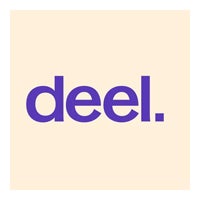
Despite competing against multi-industry juggernauts like Rippling (more on them later), Deel has successfully made a name for itself by providing some of the most extensive, comprehensive and wide-reaching EOR services available in the market. Covering more than 150 countries, and with some industry-first features that can’t be found anywhere else, Deel provides global HR functionality that’s as robust as the most powerful domestic HR platforms.
Why we chose Deel
With perhaps one or two exceptions, you’re going to see a lot of overlap in this list regarding core functionality. Most of our picks here can provide standard EOR services, employee benefits across international borders, localized compliance support, standalone contractor payroll and so forth.
Which is why it’s all the more impressive that Deel checks so many boxes that others don’t yet. Deel provides greater functionality and flexibility for contractors — physical contractor cards and health insurance discounts, for example. It offers immigration and relocation services, international background checks, and even equipment rentals. And their average onboarding time is as short as two days.
It’s convenient, scalable and user-friendly. Plus, it boasts better pricing transparency than most.
For more information, read our full Deel review.
Pricing
While Deel lists pricing on its website, it doesn’t elaborate much on how it all fits together. For example, they list separate pricing for contractor management and EOR services, but don’t mention if either is standalone or add-on, or if one is included in the other. Same goes for payroll, domestic payroll and PEO.
Pricing is also listed as “starting at” for each service, but it’s not indicated explicitly whether cost increases are tied to headcount, organization size, number of countries or other factors. User reviews and feedback indicate that the EOR service is the base cost, and that adding contractors increases pricing at the contract management rate per contractor.
That all being said, they lay out each of the following prices on their website publicly:
- Deel Contractor Management: $49/month
- Deel EOR: $599/month (or $499/month when paid annually)
- Deel Payroll: $29/month/employee
- Deel US Payroll: $19/month/employee
- Deel US PEO: $79/month/employee
Features
- Local compliance support, document collection and misclassification protection.
- Assistance with immigration, green cards, visas and more.
- Run background checks, rent out equipment, automate HR tasks and integrate into other critical apps in your tech stack.
Pros and cons
| Pros | Cons |
|---|---|
|
|
Multiplier: Best for global hiring
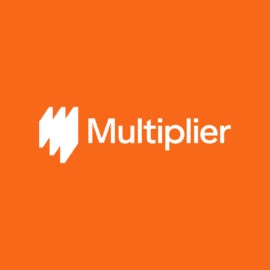
Finding the right EOR solution depends a great deal on the team composition in question. For example, a largely domestic team with a few overseas staff or freelancers will have different needs than one where most of the workforce is off-shore. And some solutions will be better suited to one than the other.
Which leads us to Multiplier, our pick for global-first hiring. Handling the complexities of a heavily decentralized team is something it’s well-suited to, and you’ll be hard pressed to find a brand that can offer better service in this regard.
Why we chose Multiplier
While not as customizable or broad in scope as other tools, Multiplier is a payroll automation powerhouse, and it enables teams to pay staff across numerous borders without added work or risk. Compliance is a core benefit, and Multiplier can provide a great deal of peace of mind for midsize teams that have to contend with a long list of national regulations.
Beyond that, Multiplier also supports international benefits, so you have more to offer job seekers no matter where you find them.
For more information, read our full Multiplier review.
Pricing
Here again, we face some slightly obscured pricing information, with the phrase “starting at” doing some serious heavy lifting. Still, base pricing is lower compared with many of Multiplier’s peers, and hey, at least there are numerical figures actually listed on the pricing page.
- Independent Contractors: $40/month
- Employer of Record: $400/month
- Global Payroll: Contact sales
Features
- Global employee benefits.
- Immigration support.
- International payroll compliance.
- First-class automation to streamline HR workflows.
Pros and cons
| Pros | Cons |
|---|---|
|
|
Rippling: Best all-in-one business software

If you’re familiar with Rippling, its placement on this list is likely unsurprising. Similar to platforms like Zoho, Oracle, Netsuite and Microsoft, Rippling is an enterprise-wide solution. With products covering everything from finance to IT, it’s the kind of technology you pick to ensure that your tech stack is as lean and manageable as possible.
Rippling offers a robust list of features and functionality, even for their global HR offerings. But while it’s clearly enterprise-grade, be aware that your mileage will vary, so to speak, based on how you implement the broader platform at your organization.
Why we chose Rippling
First and foremost, we picked Rippling for the advantages it offers when using it as an all-in-one solution. It can go toe-to-toe with its peers on this list as an EOR, and those who choose it just for that alone will be well-served by it. But that’s not all Rippling has to offer.
One of the biggest concerns a larger, more complex team has is managing digital assets. Devices and software can require a ridiculous amount of oversight and upkeep to maintain functionality, reliability, security and compliance. And the more patchwork the tech stack, the more grueling that work becomes.
As an all-in-one platform, Rippling can help organizations cut back on this burden, making it easier for infrastructure and operations staff to ensure system-wide visibility, manage user access rights, and otherwise keep the ship afloat, so to speak.
For more information, read our full Rippling review.
Pricing
The least transparent regarding pricing, you’ll need to contact Rippling directly for most details related to their cost structure. That said, they do have at least one figure stated explicitly on its site: pricing “starts at” $8 per month, per user.
Features
- Part of an all-in-one business solution platform, with other products including finance software, IT support and more.
- Automate local payroll, global compliance and a host of HR tasks.
- Faster employee onboarding and payroll lead times than many competitors.
- Top-tier compliance support, and employee benefits that meet staff expectations based on location.
Pros and cons
| Pros | Cons |
|---|---|
|
|
Remote: Best free HR tool
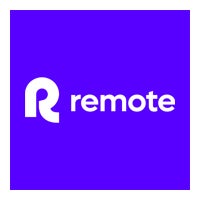
It’s hard to argue with free, right? This category of business solutions rarely comes without a cost for even the most foundational functionality. That means that while some vendors offer free trials, very few have a freemium tier.
Remote is an exception to this, though it comes with a caveat. The base HR management tool can be used for free, including time and attendance, expense management and guided onboarding. If all you need is a centralized place to keep your employee information, and you’re a smaller team with a smaller budget, Remote is a good place to start. Even if you have to upgrade or switch later, the free version allows for a risk-free test drive.
For more information, read our full Remote review.
Why we chose Remote
Remote’s solution is built to scale up and down as you need it. Add or remove feature packages as needed to match your ever-changing team dynamics. This makes it easier for smaller, growing teams to minimize their costs while also meeting their needs. In a market where so many vendors do their best to hide costs and encourage their clientele to commit to long-term contracts, Remote’s flexibility might be exactly what they’re looking for.
Pricing
There’s a lot to cover with Remote’s pricing, but it’s more straightforward with the explanations of how things break down.
- HR Management: Free
- Contractor Management: $29/contractor/month
- Payroll: $50/employee/month
- Employer of Record: $599/month
- Remote Talent: starting at $119/month
- Contractor Management Plus: $99/contractor/month
Features
- Local benefits, stock options and PTO management all in one platform.
- Pay only for what you use, regardless of subscription tier.
- API and embed options allow you to integrate Remote directly into your current tech stack.
Pros and cons
| Pros | Cons |
|---|---|
|
|
Gusto: Best for first-time international businesses
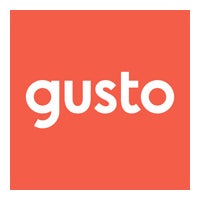
Gusto has, in very short order, claimed a significant foothold for itself in the HR and payroll software space. Many business solutions leverage Gusto to provide payroll services, and even as a standalone solution it’s an impressive yet affordable option for up-and-coming businesses.
Recently, Gusto has begun moving into the EOR space as well. Through a partnership with Remote (see above for details on them), Gusto now offers international contractor payments in over 120 countries, and support for full-time employees on a limited (but growing) basis. Currently, Gusto only supports salaried FTEs, and only in Canada, India, the Philippines and Mexico. This makes it the solution with the smallest reach on this list.
However, with so many teams already relying on Gusto for HR and payroll tools, adding EOR support through the platform can minimize implementation time, and help avoid unnecessary migration costs.
Why we chose Gusto
Gusto is a very popular payroll solution, and it boasts an incredibly intuitive user interface. The cost of using Gusto for domestic employees is among the lowest in the market, and a number of other HR tools already use Gusto as a payroll facilitator. For reasons like these, we see Gusto as a smart choice for teams that are perhaps just dabbling in international hiring.
Gusto’s EOR and international contractor pricing is per employee, so while scaling may be a bit costly, it’s potentially less expensive than alternatives if you’re only dealing with a handful of overseas staff members.
For more information, read our full Gusto review.
Pricing
Gusto has base pricing for domestic contractors and employees, but paying international contractors or hiring off-shore employees requires add-ons with separate fee structures (one of which isn’t listed publicly).
- Contractor Only (domestic): $35/month, plus $6/contractor/month
- Simple (domestic): $40/month, plus $6/employee/month
- Plus (domestic): $80/month, plus $12/employee/month
- Premium (domestic): call for quote
- Gusto Global EOR: $599/employee/month ($699/employee/month after Dec 31, 2024)
- International Contractor Payments: call for quote
Features
- Payroll management and automations, including unlimited payroll runs.
- Intuitive UI that’s familiar to many.
- Robust HR and benefits administration, including PTO and time/attendance.
- First-rate integrations and compliance support.
Pros and cons
| Pros | Cons |
|---|---|
|
|
Papaya Global: Most flexible solution
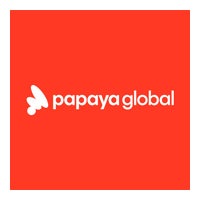
With “global” right there in the brand name, it better be a competent EOR, right? Actually, yes (in this case, at least). Papaya Global is unique in this list, as it’s an EOR first and foremost, rather than starting as a domestic HR/payroll solution. That purpose-built design is evident in the user experience and the extensive adaptability the platform offers.
Boasting EOR, PEO and AOR services, Papaya Global covers a staggering number of possible use cases for organizations with international workforces. And with benefits like their 100% compliance guarantee and AI-powered fraud detection, it also comes with an impressive side serving of peace of mind.
Why we chose Papaya Global
As we’ve mentioned a few times already, managing payroll and benefits across national boundaries can get convoluted. While the other options in this list are all quality solutions with their fair share of use cases, Papaya Global covers the most diverse set of circumstances and situations.
In short, if you already know that you have a use case that’s riddled with quandaries and complexities, your best bet is to look into Papaya Global before anything else, and then check other solutions to see if they actually cover your needs effectively.
For more information, read our full Papaya Global review.
Pricing
Papaya Global lists clear pricing for five different services, covering domestic employees, contractors, global workforce payments, EOR and Agent of Record. What’s not immediately clear from the language on their pricing page is how it all interacts.
Payroll Plus, its domestic employee solution, has three subscription tiers, but also has a minimum employee count. Additionally, there is an additional fee for each transaction.
Contractor management and payments covers both domestic and international contractors with a single base per-contractor fee. However, it’s also subject to per-transaction fees, with international payments at a higher rate than domestic.
That being said, the remaining cost structures for EOR and AOR are pretty straightforward:
- EOR: $599/employee/month
- AOR: $200/contractor/month
Features
- Extreme compliance and security, with certified compliance to ISO, SOC and GDPR.
- Automated onboarding, native HRIS and a convenient employee self-service app.
- Advanced analytics and reports for payroll, workforce data and ERP, among others.
- Advisory and support from CPAs, local regulation experts and more.
Pros and cons
| Pros | Cons |
|---|---|
|
|
How do I choose the best EOR service for my business?
Everything else aside, here’s the most important criteria for an EOR service: compliance. Payroll and benefits are, let’s face it, the core reasons why anyone shows up to work in the first place (otherwise they’d be called volunteers, not employees). So it’s safe to say they go in the “must have” column.
We don’t need to tell you that regulations abound when it comes to money changing hands, even when everyone lives and works in the same locality. And, if you’ve read this far, we don’t need to blather on any further about how complex the regulatory interactions get once you start spreading out all of those employees. So we won’t. Too much.
Even from region to region in the same country, things can get really messy, really fast. Add to that any industry-specific compliance concerns, uncommon employee locations or situations, and a few other issues along those lines, and you have a use case that looks like a legal minefield.
What we mean to say is this: we don’t know what angle you’re coming at this from, or the granular details of your particular needs. So a single recommendation would be difficult here. What we do know, and want to stress explicitly, is that deciding on a provider should be primarily weighted toward the vendor that can most effectively meet your compliance needs.
Don’t rush this process. Researching and vetting providers can be both a time sink and a resource sink in equal measure. But it’s better to do your due diligence than face regulatory fines. In a way, the best-case scenario is one where, down the line, everyone wonders if all that legwork was even necessary. You certainly don’t want to find yourself regretting the choice to skip it.
So while things like intuitive user experience, customer support, flexibility, cost and other common factors are important, they’re not the one that will determine success or failure. You’re better off with somewhat clunky interfaces or missing features than with a provider that can’t help you avoid compliance violations.
Bottom line: start by finding the vendors that can actually improve your ability to mitigate these risks, and make your buying decisions from there.
Methodology
We looked at a wide range of EOR solutions to compile this list of the best software. We assessed different parameters for each software, including its usability, scalability, standout features and customer support. We also considered customer testimonials and ratings as vital components of our overall assessment of each software.




